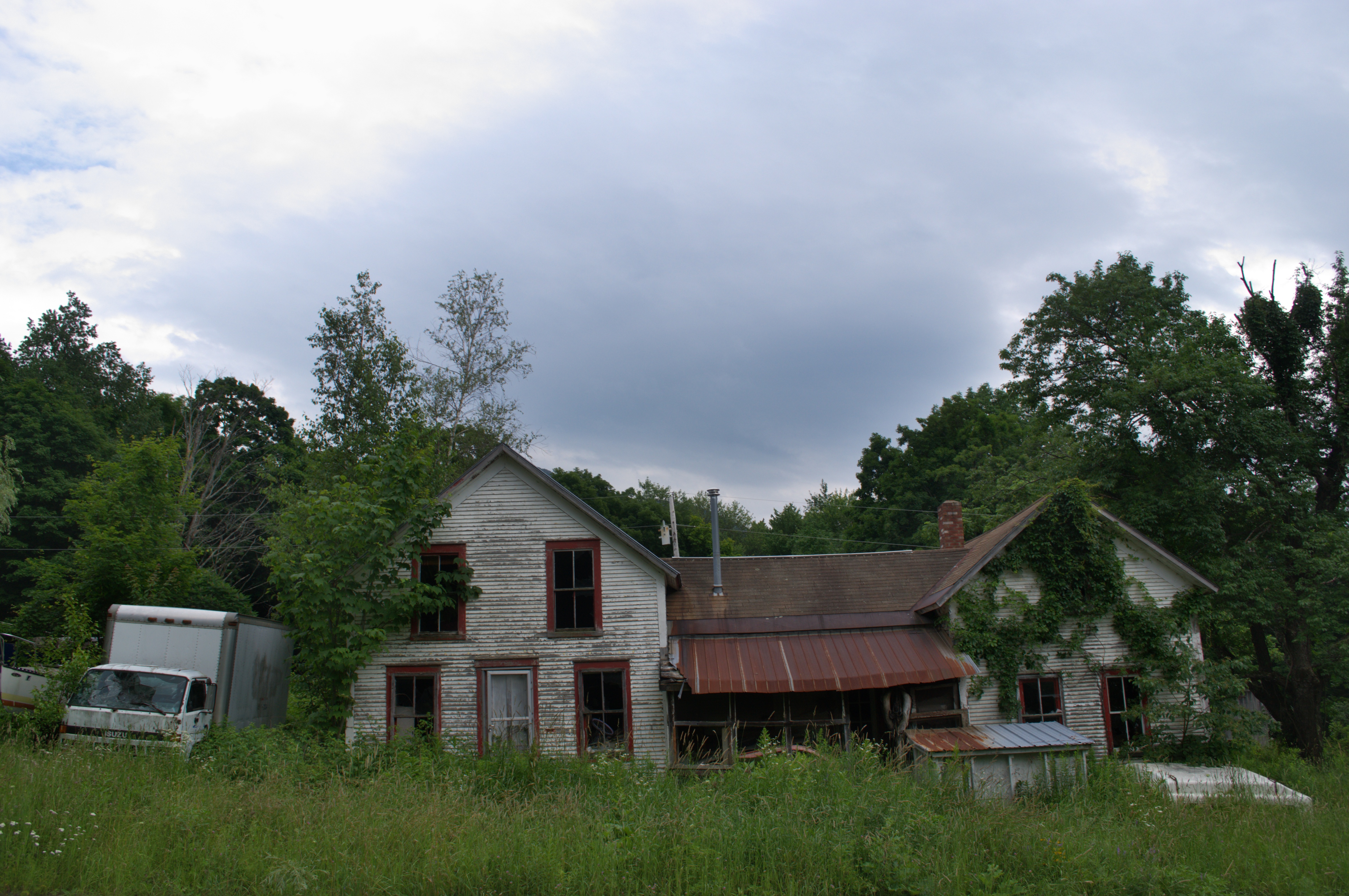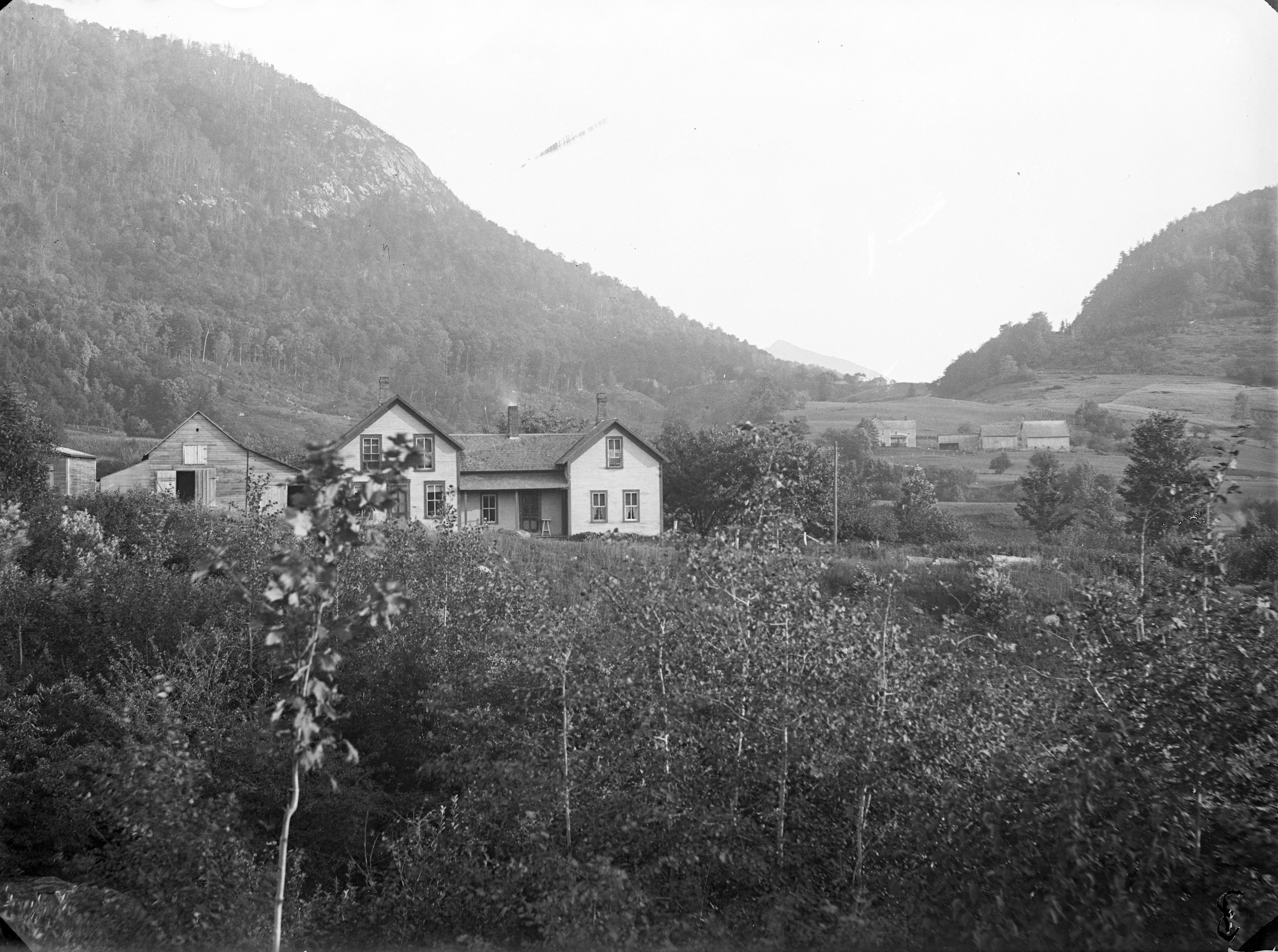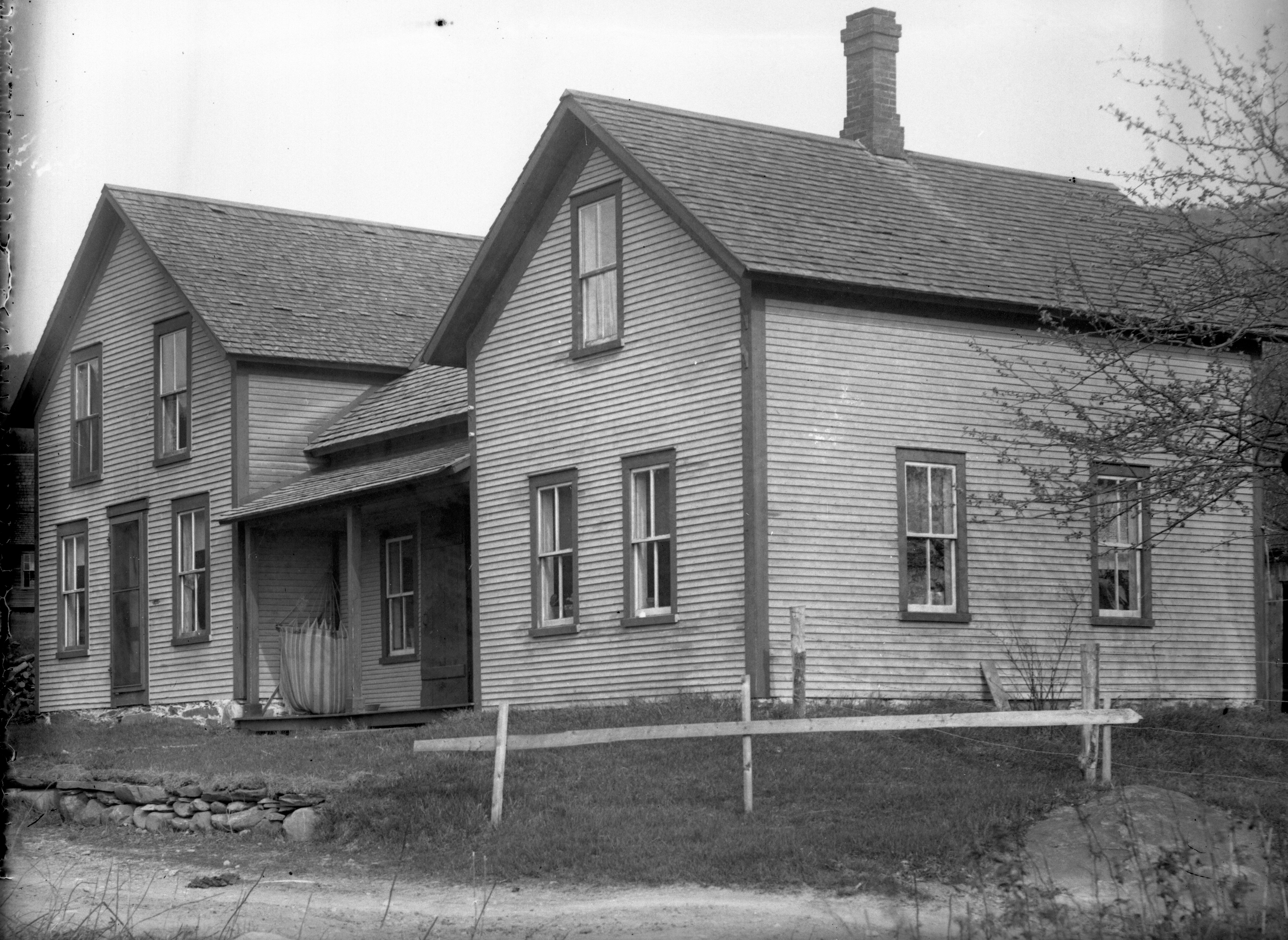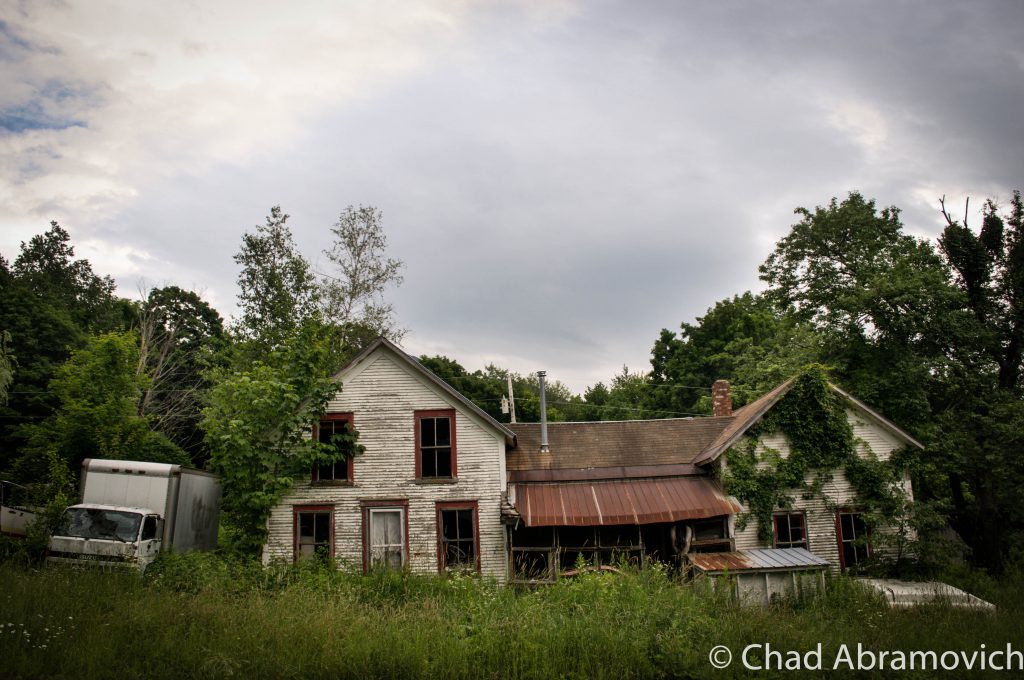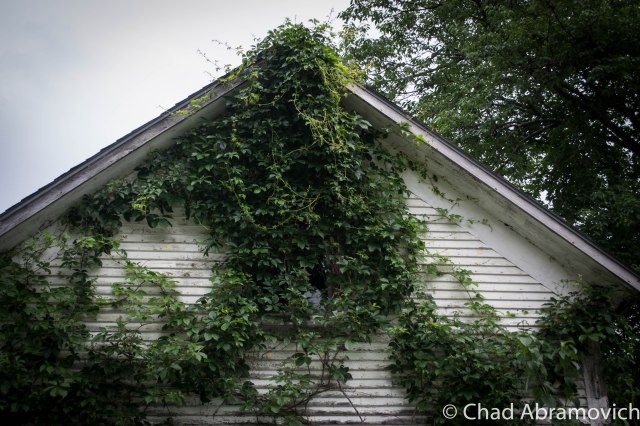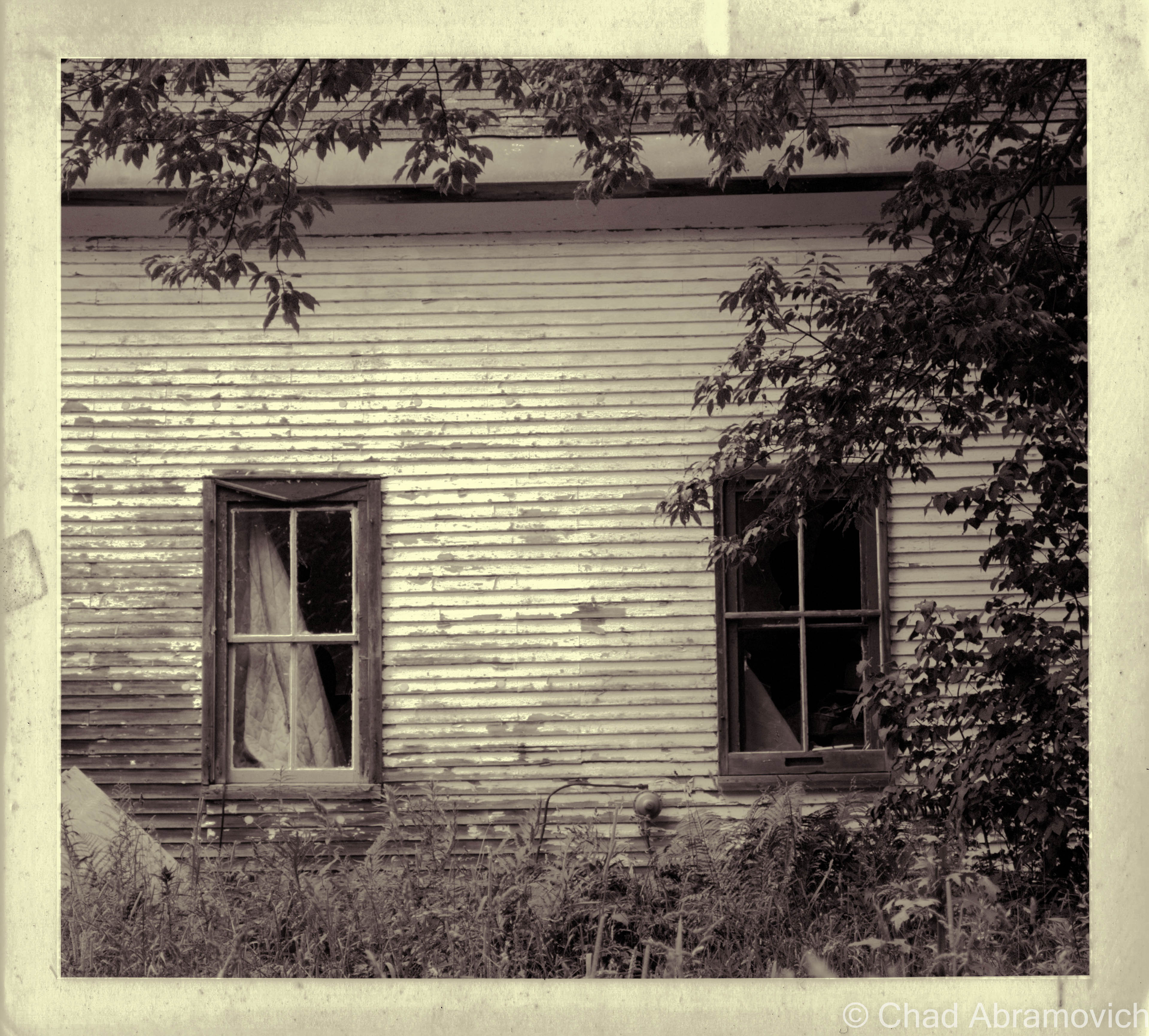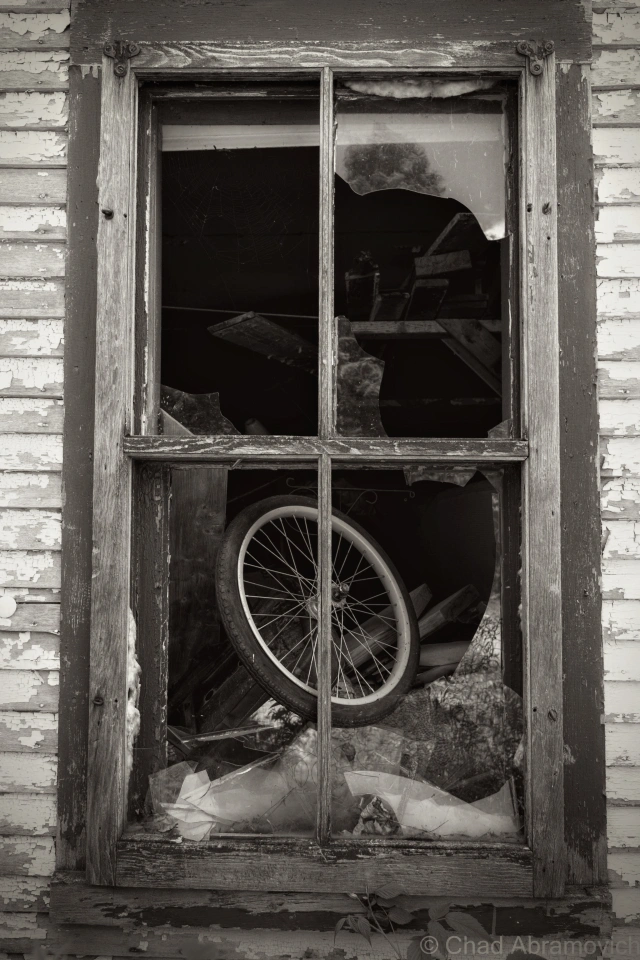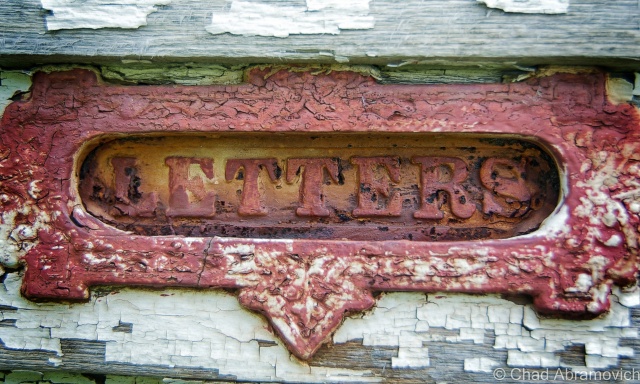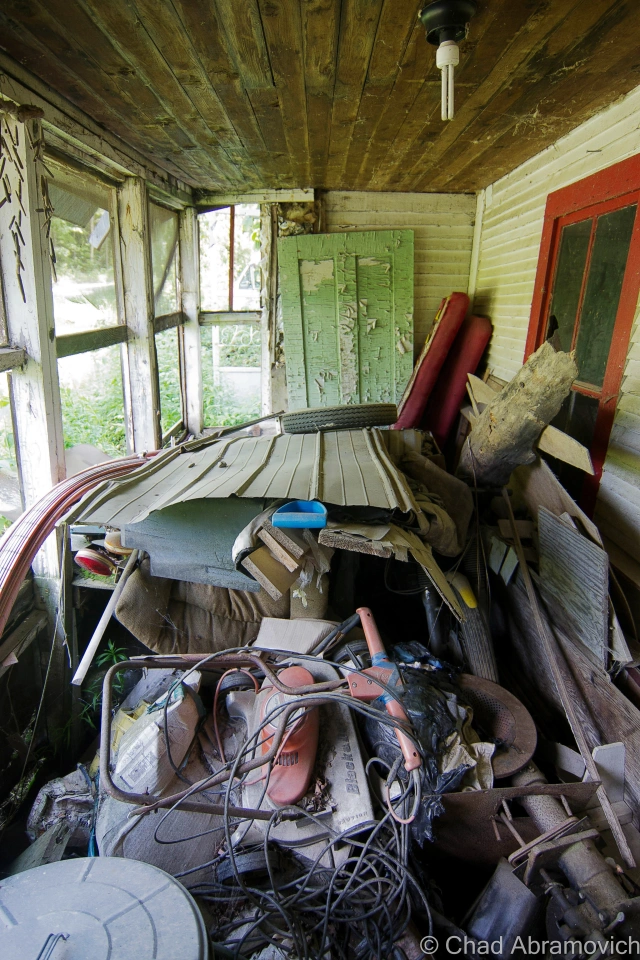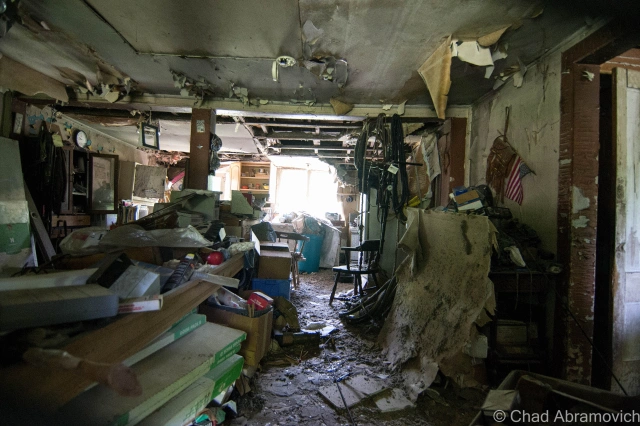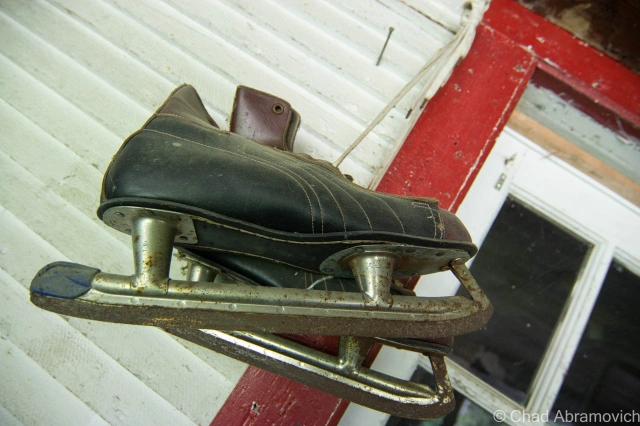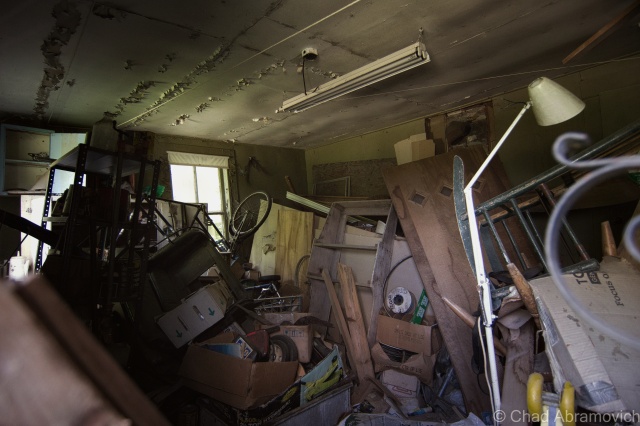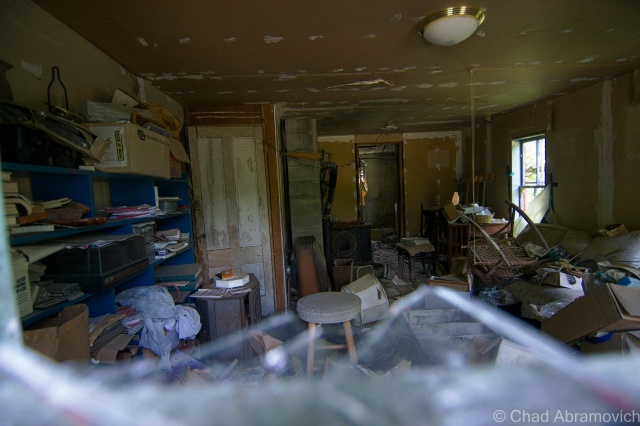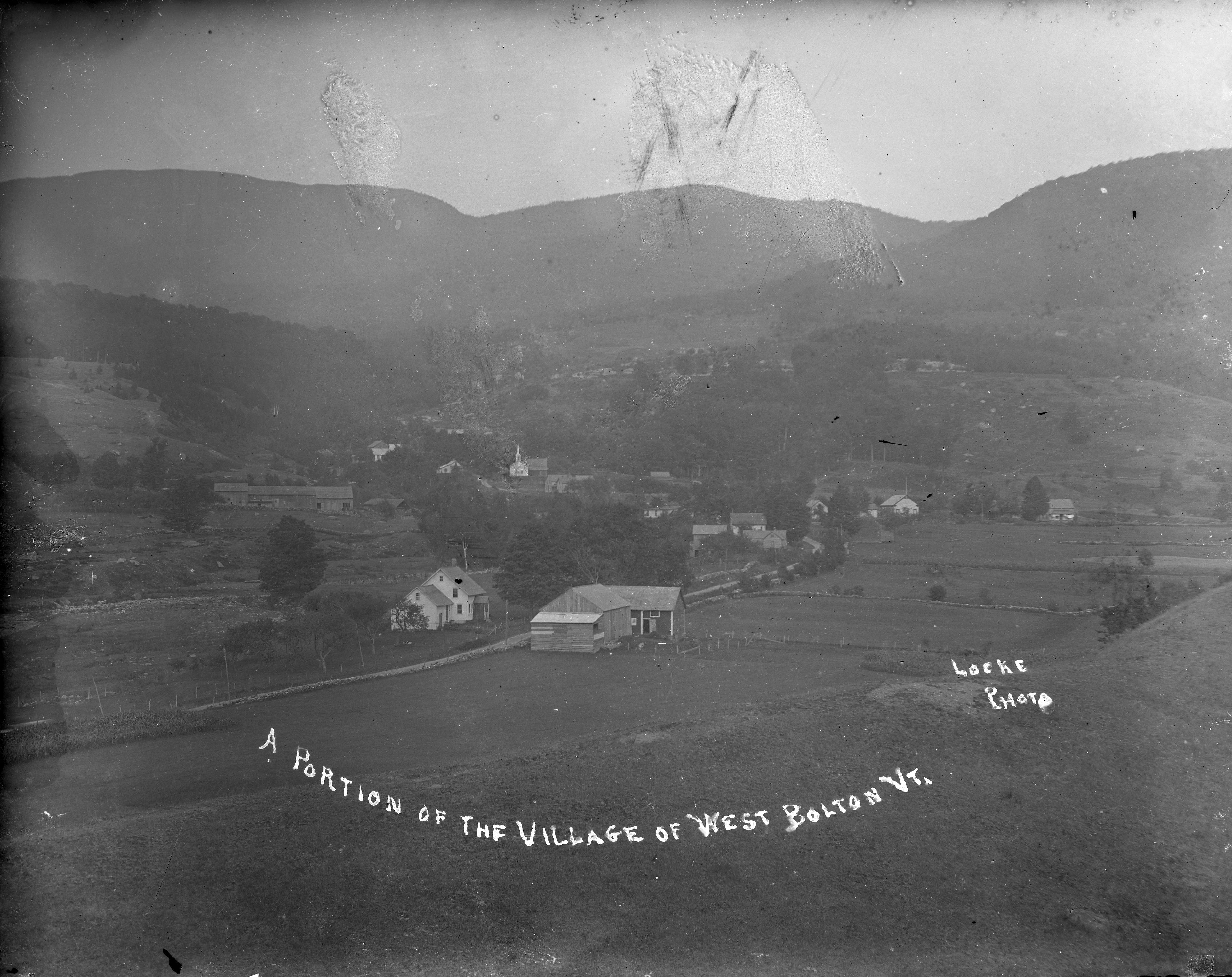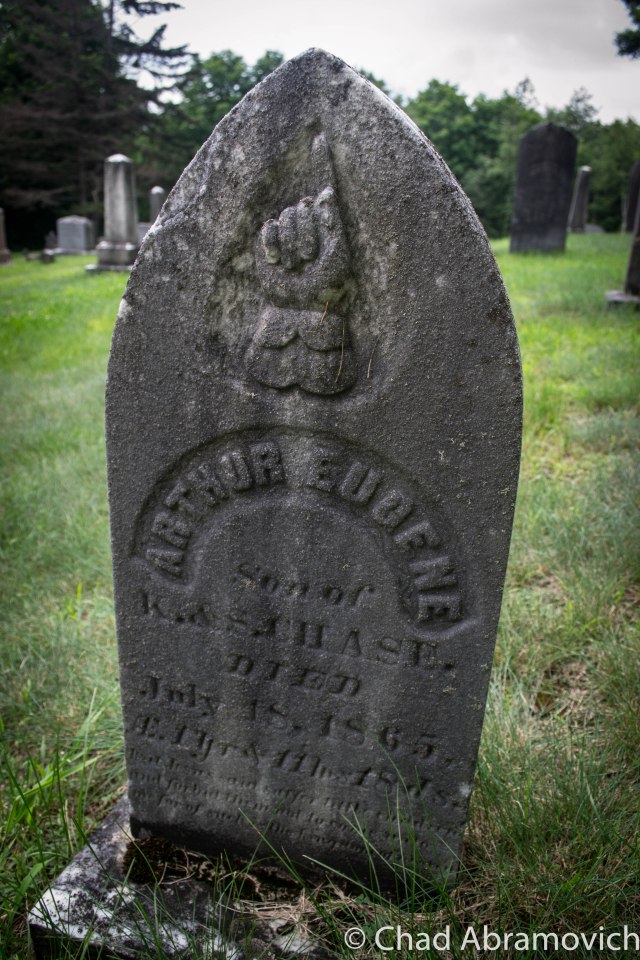It seems this year it rains every time the summer sends her best. The weather hasn’t been ideal for adventuring, with a string of floods and road washouts. So when a rare overcast afternoon came my way, I took advantage of it.
Getting together with a good friend, we set off for West Bolton, a remote area located high in the slopes of the Green Mountains, only accessible by a labyrinth of back roads that twist their way up steep hills. But as soon as we left Route 117, we were greeted with washed out dirt roads and attention grabbing orange cones as our car bumped and jarred its way into the mountains.
With Motown soul coming through the radio, I gazed up at the mountains in my reverie, the fogs soluble on the summer canopy. It was wild country up here, and the change of scenery was lifting my spirits, as I felt like I was coming back from what seemed like a ruin.
There was one particular house I wanted to see, and as we ascended up a slight turn, it’s ramshackle facade came into view with tall grass and vines and a rusting tin roof under the promise of rain.
I loved this old house. The front lawn had grown wild and covered the piles of discarded junk that surrounded the house, their forms almost indistinguishable. All of the old farmhouse windows were broken, and from its vulnerable wounds, the inside could be seen. The inside appeared to be chaotic and filthy. Most of the windows had mysterious mounds of debris in front of them, some of it threatening to spill out onto the lawn. Other windows had quilts and bed sheets nailed over them from the inside, and were long moth ridden and disintegrating. But my line of sight faded into the contrasts as the heavy shadows soon swallowed my visibility, keeping the house’s secrets lost in the dark. The battered metal screen door hung open near the front lawn, stopped by the tall grasses. The remnants of a rotting wooden fence occasionally protruded from the growth.
Looking at this old house now, and its depleting condition and fading paint, it’s almost as if this property is wistfully saying “this past century went like a life out of me”
With a surprising steady flow of traffic for a rut chocked back road, and tall grass that obscured our vision, we decided it was best (to my disappointment) not to venture too close to the sagging property. That decision may have proved to be very smart, as we heard scurrying through the grass and the sounds of claws on wooden siding. Some kind of animal had just crawled into one of the broken windows.
With some quick research, I was able to find some old photos of the house, which offered an interesting glimpse into what once was. The first thing I found out was it had an official name; The Pease House, named after its founding family. The wide open spaces and cleared hill meadows that surrounded the house have long returned to woods – this house a last enclave of Bolton’s former life as the area continues to meld with the untamed mountains above.
The determined people who once cleared the land and built this house, the ones who once knew the front porch and the doorways and cherished the moonlight on hot summer nights, now nothing more than dust – a deadpanning reality at how fragile urban infrastructure is, and how easily things can become lost.
The reasoning for its current abandonment is unknown to me, but as someone informed me, it is owned by someone. Perhaps sometimes, we are the ghosts we don’t believe in.
The Pease House circa 1860s
The Pease House Today
West Bolton is a name lost to history. What used to be a small village in the mountains, complete with 2 churches, a sawmill and general store, is now nothing more then a name on the map, with a scattering of private residences and a more well-known golf course that wears the same name.
The town of Bolton is mountainous, rocky and gave the early settlers more work than they bargained for. It’s no surprise that Bolton is referred to as “the land of boulders and bears.” The town has more than twenty mountains of over 2,000 feet, and nearly as many more just under that height – creating natural barriers to trade and travel in the town, along with isolation that would meet the pioneering families under the stars. Today, it’s rugged slopes create outdoor recreation opportunities in the form of skiing and snowboarding at Bolton Mountain, tons of rock climbing opportunities and the infamous Bolton potholes, a beloved swimming hole that the locals despise because of the hoards of disrespectful visitors who flock there.
Even driving along Interstate 89, which seems to be the most traveled route in town which also doesn’t technically let you off in Bolton, the awesome vertical cliffs that the highway cuts through are testaments to Bolton’s nickname. Though many of Bolton’s bumps remain unnamed, one vertical drop earned its namesake from a man who committed suicide from it years ago. Alan’s leap is seemingly well solidified amongst the locals for its views and it’s perception of a moment of morbidity. Vermont is known for its grueling winters, and Bolton’s position literally on the spine of the Green Mountains means it gets dumped on rather spitefully once the temperatures drop below freezing. A blog commenter recalled that two women who lived down the road from one another both committed suicide because of the internal darkness they faced brought on by the perennial death of the year.
Historical records tell stories of bears coming down from the mountains and mass slaughtering sheep flocks around the village of West Bolton. The bear problem was once so bad that Bolton once had the honor of being the town with more bears slain in its borders than any other town in Vermont.
In the 1930s, The Government bought around 6,000 acres of land around West Bolton and Jericho for the Ethan Allen Training Site, and much of the village of West Bolton was destroyed in the name of progress. Today, all that remains are a few foundations sitting in the quiet woodlands above boulder logged streams and old Apple Trees hinting at the site of a former farm. I was told that UVM mapped the area and had a walking tour for a while in the 1990s.
The surrounding woods along the back roads that travel along the ridge lines and swamps are congested with “US Property, NO Trespassing” warnings on almost every tree.

One of the few remaining foundations we were able to find is the site of a former church, now nothing more than its front stairs.
Nearby was the old West Bolton Cemetery, which is still maintained. It was oddly quiet here, with a solemn weight that seemed to hang over the Maples and hollows. There was also an amusing sign attached to the front gate, humorously prohibiting ATVs from riding in the local cemetery. Within 10 seconds of us seeing this sign, a group of ATVs came up the dirt road towards the cemetery, 4 of them packed with 2-3 riders on each one. They slowed down as they approached the fence, revved their engines obnoxiously for several minutes, then took off down the road sending gravel and dust in their wake. Maybe they didn’t like the new sign?
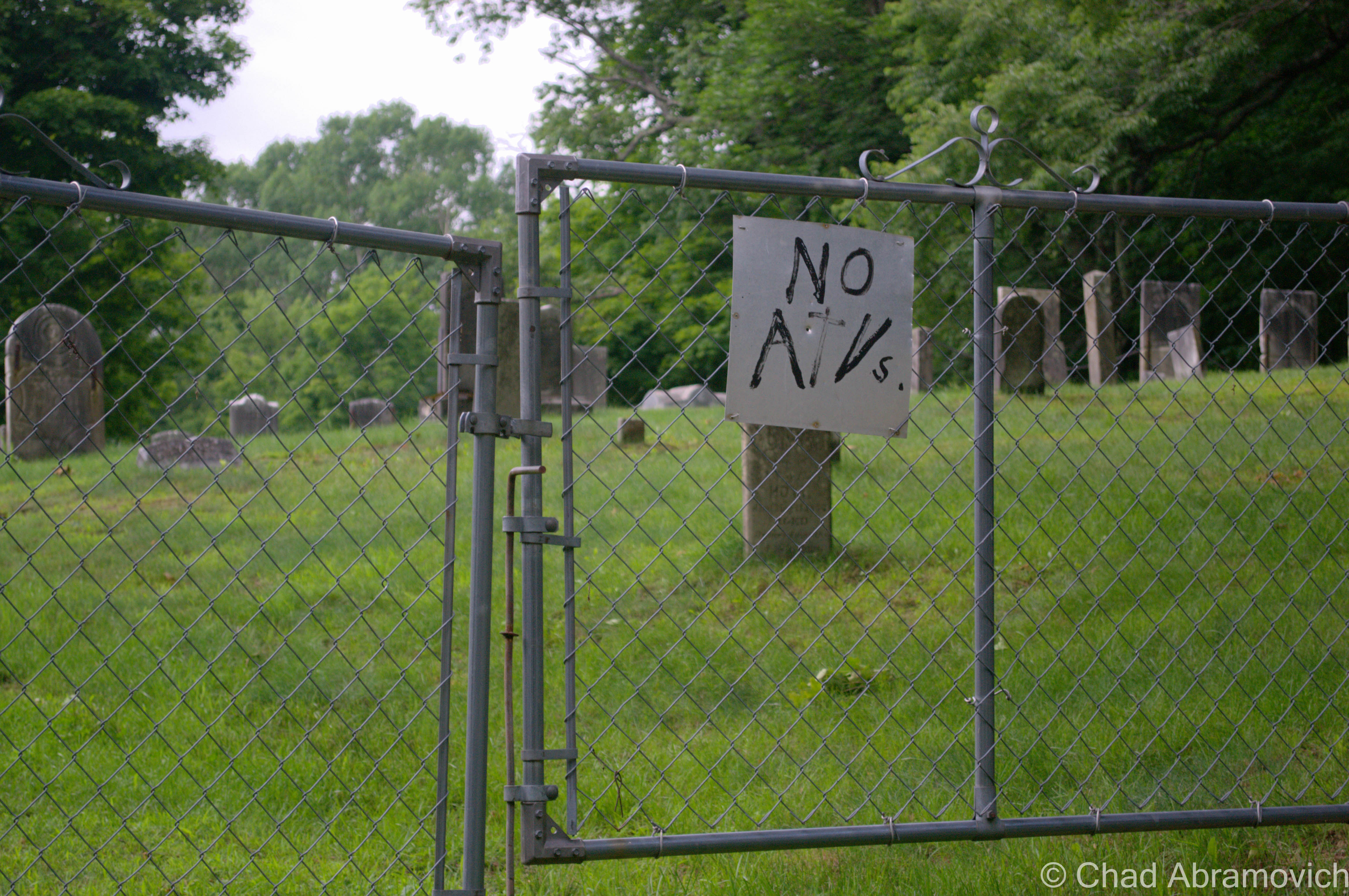
I sometimes enjoy walking through older cemeteries to admire and become intrigued with unique epitaphs, symbols alluding to secret societies, and other oddities that have been chiseled onto the aging headstones. There is always a story to be told. One of my favorite finds in West Bolton was this etching of a hand, with a finger dramatically pointing up to the skies above. In the 1800s, it was sometimes common for this to appear on headstones, with the intention of saying that without a doubt, this deceased soul did in fact go to heaven. But no one knows for sure if this gesture was telling any profound truth or not. And I suppose you don’t have to go ghost hunting in your afterlife to find out.
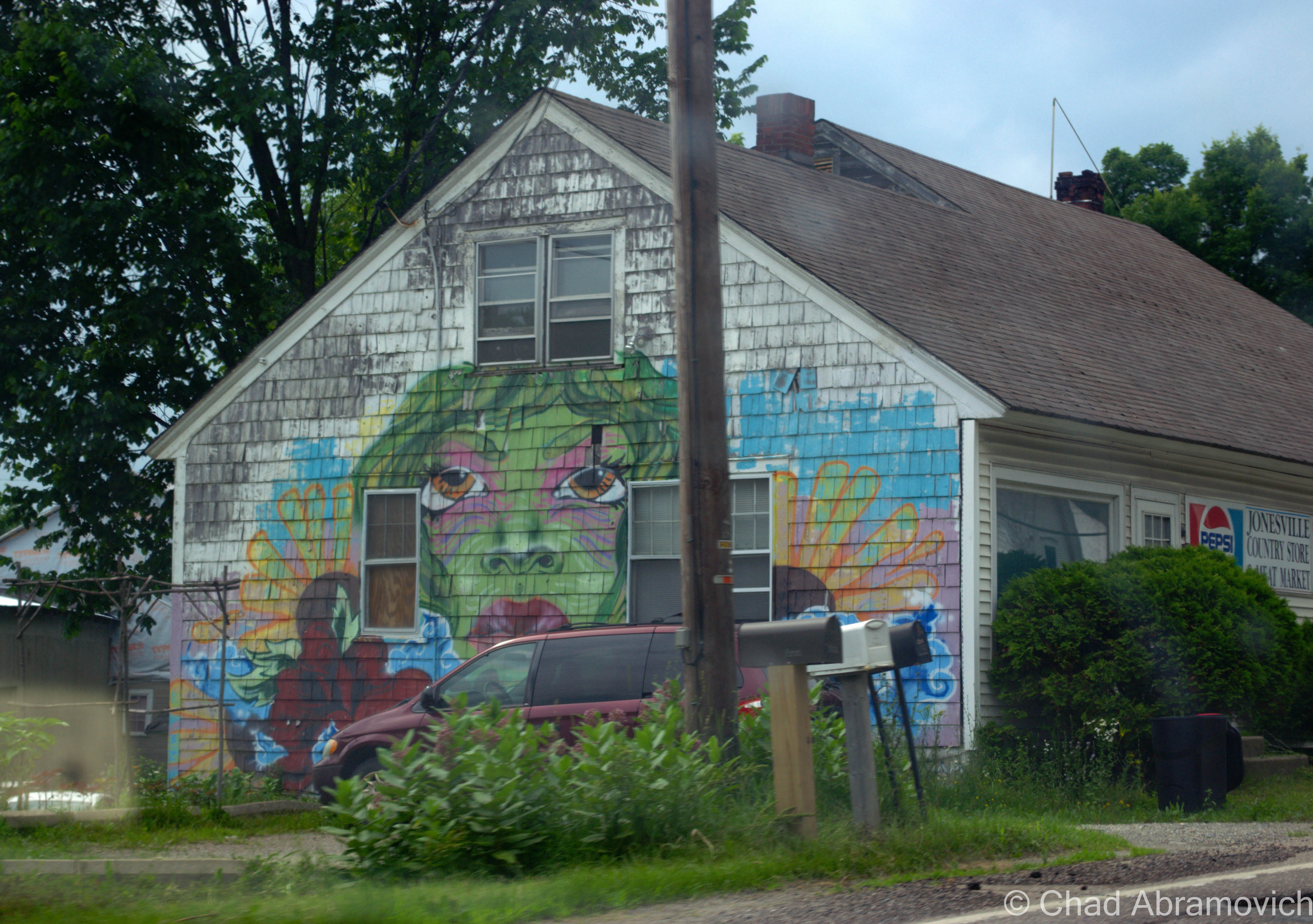
As seen in “Downtown” Jonesville.
—————————————————————————————————————————————–
To all of my amazing fans and supporters, I am truly grateful and humbled by all of the support and donations through out the years that have kept Obscure Vermont up and running.
As you all know I spend countless hours researching, writing, and traveling to produce and sustain this blog. Obscure Vermont is funded entirely on generous donations that you the wonderful viewers and supporters have made. Expenses range from internet fees to host the blog, to investing in research materials, to traveling expenses. Also, donations help keep me current with my photography gear, computer, and computer software so that I can deliver the best quality possible.
If you value, appreciate, and enjoy reading about my adventures please consider making a donation to my new Gofundme account or Paypal. Any donation would not only be greatly appreciated and help keep this blog going, it would also keep me doing what I love. Thank you!
Gofundme: https://www.gofundme.com/b5jp97d4


